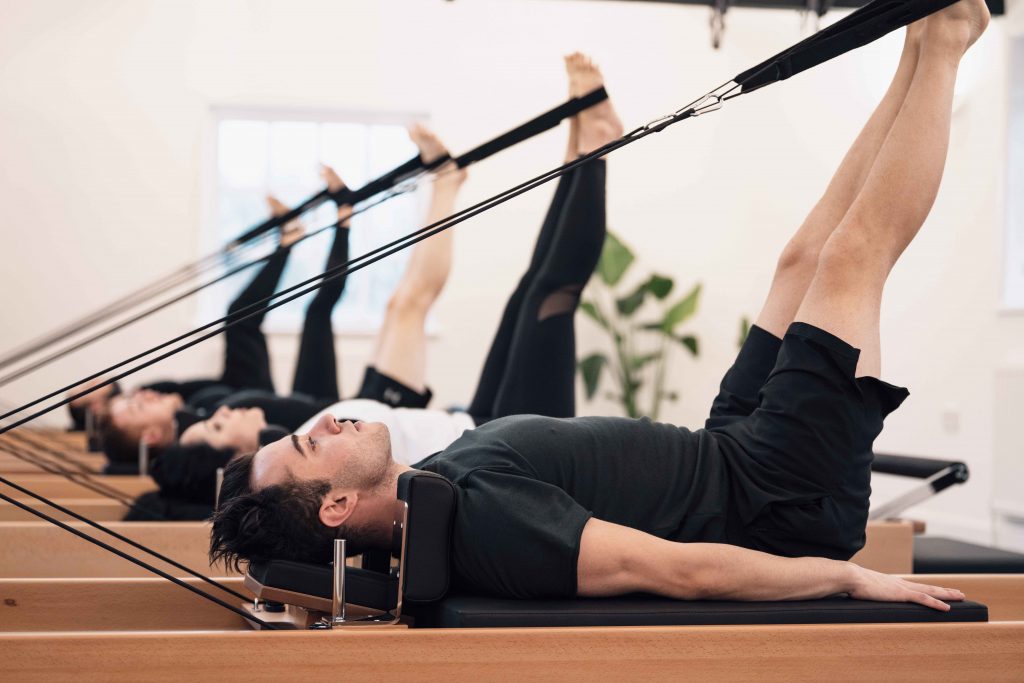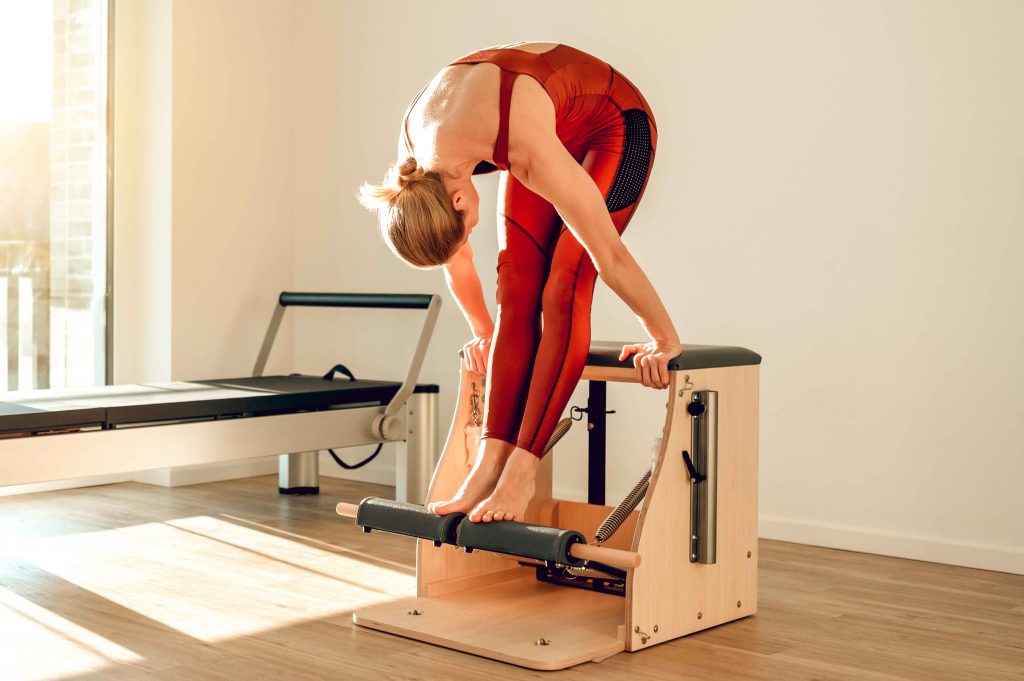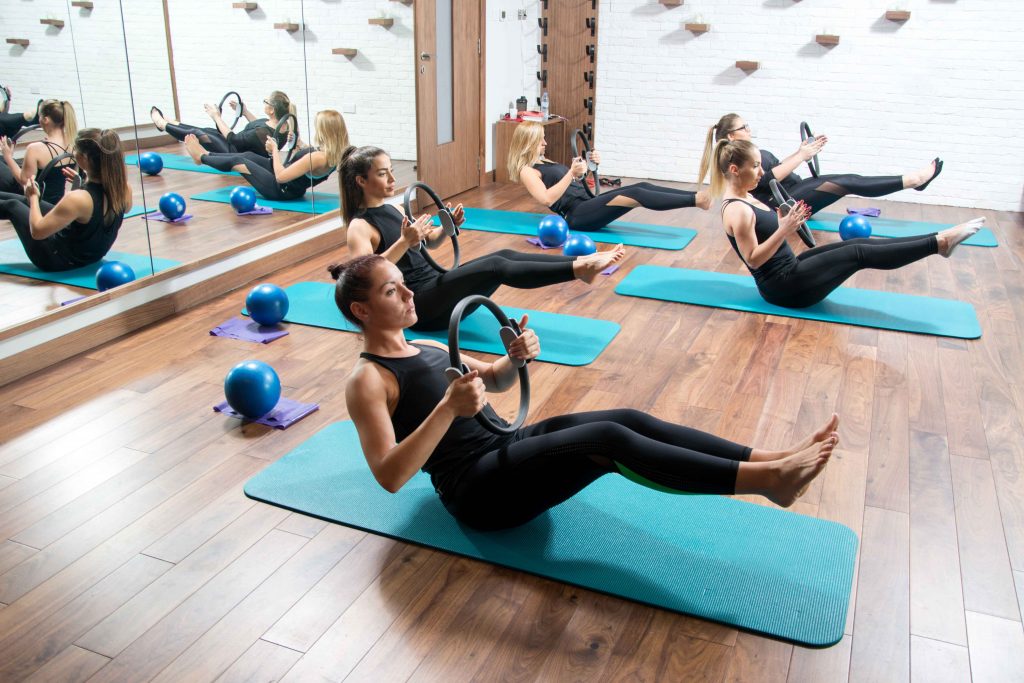If you’re passionate about movement, wellness, and helping people live healthier lives, becoming a Pilates instructor might be your perfect career path. With the popularity of Pilates continuing to grow worldwide, more people are exploring how to turn their passion for Pilates into a career. But how do you get started? What qualifications do you need, how much does it cost, and how long does it take?
In this guide, we’ll explore the steps to become a Pilates instructor, including the necessary certifications, time commitment, and potential career opportunities.

Understanding the role of a Pilates instructor
Pilates instructors are more than just fitness professionals. They are educators, motivators, and movement specialists. As a Pilates teacher, your role involves guiding clients through controlled exercises designed to strengthen core muscles, improve flexibility, correct posture, and enhance overall body awareness. Depending on your interests and specialisms, you’ll teach group classes, private sessions, or work one-on-one in rehabilitation settings.
There are two main areas in Pilates instruction: mat-based Pilates and apparatus-based Pilates, which involves equipment such as the Reformer, Cadillac, and Wunda Chair. Some instructors choose to specialise in one, or you could choose comprehensive training that covers both.
How to get started as a Pilates instructor
The first step in becoming a Pilates instructor is selecting a training program that aligns with your goals and learning style. In the UK, choosing a course recognised by industry bodies like CIMSPA, Active IQ, or Ofqual is important. These qualifications make you more eligible for insurance and employment opportunities at studios or gyms.
You’ll need to decide whether to focus solely on Mat Pilates, which is usually faster and more affordable to qualify in or choose a Comprehensive Pilates qualification that includes mat and equipment training. Most newcomers start with a mat qualification, then add to it with equipment training or specialist courses.

What qualifications do you need to be a Pilates instructor?
In the UK, the most common qualification for teaching is a level 3 Diploma in Teaching Mat Pilates. This includes anatomy and physiology, principles of Pilates, planning and delivering sessions, and adapting exercises for individual needs. If you want to teach in gyms, you may also benefit from a Level 2 Certificate in Fitness Instructing, but this isn’t always needed.
A qualification through internationally recognised providers like STOTT Pilates, Balanced Body, or Body Control Pilates is recommended for a more in-depth route. These qualifications are often needed to work in rehabilitation or practice Pilates in a healthcare setting.
How long does it take to become a Pilates instructor?
The time it takes to become a Pilates instructor depends on the type of course you choose and how much time you can commit. A mat-based Pilates course can take anywhere from three to six months to complete on a part-time basis. This includes classroom instruction and practical hours.
If you’re choosing a comprehensive Pilates qualification, it typically takes 12 to 18 months to complete. This covers an extensive study of anatomy, biomechanics, equipment usage, teaching practice, and assessments.
Many training providers offer modular learning, so you can study at your own pace, which is useful if you’re balancing training with a full-time job or other commitments.
How many hours does it take to become a Pilates instructor?
Most comprehensive programs require between 450 and 600 hours of combined study, practice teaching, observation, and coursework. Mat-only courses need fewer hours, usually between 50-100. But it’s not just about completing hours – mastering the principles of Pilates, developing confidence and modifying exercises for different clients is key.
How much does it cost to become a Pilates instructor?
Cost is another important factor to think about. Level 3 Mat-based Pilates courses range from £800 to £1,200, while a Level 4 Advanced Certificate with equipment training can cost between £1,500 and £3,000 or more.
While the initial cost can seem steep, it’s worth thinking of it as an investment in a long-term career. With the right marketing and experience, you can earn this back quickly, especially if you teach private sessions or go on to open your own studio.
Can I teach Pilates without a qualification?
This is a common question, and the answer is technically yes but in practice, it’s not advised. There’s no legal requirement to hold a formal qualification to teach Pilates in the UK. However, without one, you will likely be unable to obtain insurance. And most gyms, studios, and health facilities won’t hire unqualified instructors.
As well as this, teaching without proper training could put clients at risk of injury. Pilates involves a good understanding of anatomy. That’s why training is not only professional but also ethical.

Where can Pilates instructors work?
Once you’re qualified, you can work in a wide range of settings. Many Pilates instructors work in fitness studios, gyms, health clinics, or corporate wellness programs. There’s also growing demand for online Pilates classes, with instructors building their brands on platforms like YouTube and Instagram.
You may choose to work for a studio or as a freelancer, giving you the flexibility to set your own hours, rates, and classes. Some instructors even run retreats or workshops across the UK and abroad.
Specialisms and continuing education
There is always more to learn in Pilates. As you become more experienced, you can choose to specialise in areas such as:
- Prenatal and postnatal Pilates
- Pilates for seniors
- Clinical Pilates for injury rehab
- Pilates for athletes and dancers
- Neurological or musculoskeletal conditions
These often need further qualifications, but they also boost your value and client reach as an instructor.
Salary: How much can a Pilates instructor earn?
Salaries vary depending on where you work, how many hours you teach, and your level of expertise. In the UK, as an instructor working freelance in a health club or studio, you can expect to get £20 to £50 an hour. Private sessions can bring in between £50 and £100 per hour, especially in cities like London.
You can earn a good income by teaching group classes, online sessions or building a client base. Some instructors also incorporate workshops or teacher training programs into their teaching, which can generate additional income.
Becoming a pilates instructor
Becoming a Pilates teacher is about more than passing an exam. It’s about committing to a journey of learning, self-awareness, and helping others feel strong in their own bodies. The process involves choosing the right training course, allocating time and resources, and continually developing your professional skills. Whether you start with mat Pilates or go for a comprehensive qualification, you’ll be choosing a career that’s flexible, creative, and inspirational.
So, take the leap if you’re ready to turn your love for Pilates into a fulfilling profession. Research training providers or attend a beginner instructor workshop to get a feel for your path ahead.

Specialist Pilates insurance through Insure4Sport
Whether your equipment gets damaged or you or a client suffers an injury, specialist Pilates insurance can give you financial protection and peace of mind should the worst happen.
Specialist insurance for Pilates instructors through Insure4Sport can help protect you against third-party claims, theft and loss of or damage to any sports equipment you own, and even loss of earnings should you suffer a personal injury that results in your inability to work.
Learn more about specialist Pilates instructor insurance through Insure4Sport, or get a quick quote today.



